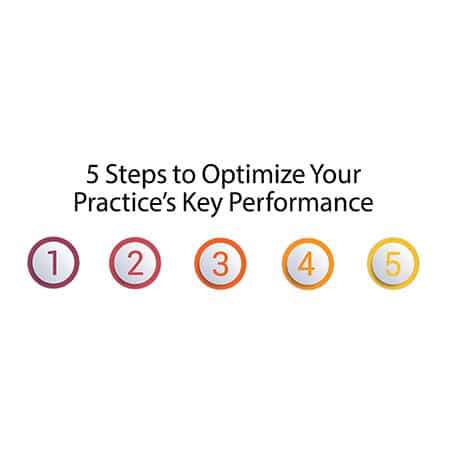Practice Management
5 Steps to Optimize Your Practice’s Key Performance

This article was originally published on Review of Optometric Business and reprinted with permission.
By TSO Board Member Mark Wright, OD, FCOVD, and Carole Burns, OD, FCOVD
The pandemic set practices back financially. Part of getting back on track is carefully monitoring and growing key metrics. Here is a five-step action plan to help you optimize your key performance indicators (KPIs).
1) Measure your KPIs
The first step is to decide what KPIs are important for you to track in order to manage your practice well. Do not spend time, effort and energy tracking numbers that you are not going to use in making practice management decisions.
KPIs that are often used in making management decisions are: gross revenue collected, net profit, cost of goods expenses, number of comprehensive exams, number of new patients and capture rate. If there are other KPIs that you utilize in your practice management decision-making process, then add them to the list.
2) Compare your current KPIs with your
practice numbers and national numbers from last year. It’s important to compare your current KPIs with both last year’s practice KPI numbers and national benchmark numbers from this year. Comparing your performance to last year tells the story of what is happening in your practice over time. Comparing your performance to national benchmark numbers from this year tells the story of how your practice is doing compared to other practices.
3) Compare your KPI trends with national
trends over the last three years A minimum of three numbers constitute a trend. Looking at the trend of the last three years of your practice KPI numbers may be more important than just looking at a single year’s number. Are your trends up or down (flat is a special case of down)? Based on your three-year trends, you can more effectively manage your practice.
When up is good and down is bad, if your three-year trends are up then manage your practice by looking to increase efficiency and effectiveness without making major changes in your practice. If your trends are down, then manage your practice by making a change 1/7 (remember Einstein’s definition of insanity: doing the same thing and expecting a different result). Keep making changes until you find your trends reverse and move upwards.
4) Write up exactly what you are doing now for each KPI as a baseline
For each of your major KPIs, you should have a complete write-up describing exactly what you are doing to best manage each KPI. This will take a bit of work upfront, however it will make both management and training a much easier process in the long run. What scripts do you use, in what order are things presented, what education is required, how is the KPI measured and how reporting occurs are just a few of the things that should be in the write-ups.
Each staff member within your practice has at least one piece of knowledge about your practice that only they know. If they leave your practice and they have not written that information down for the next person who takes over their job to know, it will take 2-3 years to rediscover that valuable information.
5) When making changes to improve your performance, update the write-ups
When you determine that a change is necessary to improve the performance of a KPI, then be sure to write-up the successful changes. This becomes an ongoing project within the practice because there will always be new procedures, new equipment and better ways of doing things.
When your KPIs are in good control, review them at least once a month. If your KPIs are out of control, then you may need to review them weekly or even daily. By staying on top of your KPIs and keeping them in good control, you can ensure a fiscally healthy practice and excellent delivery of patient care.

